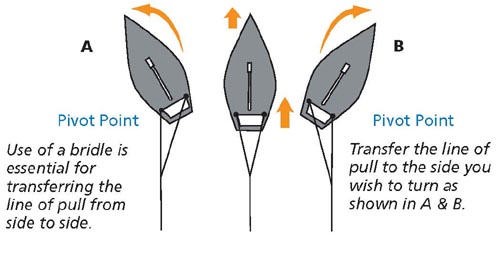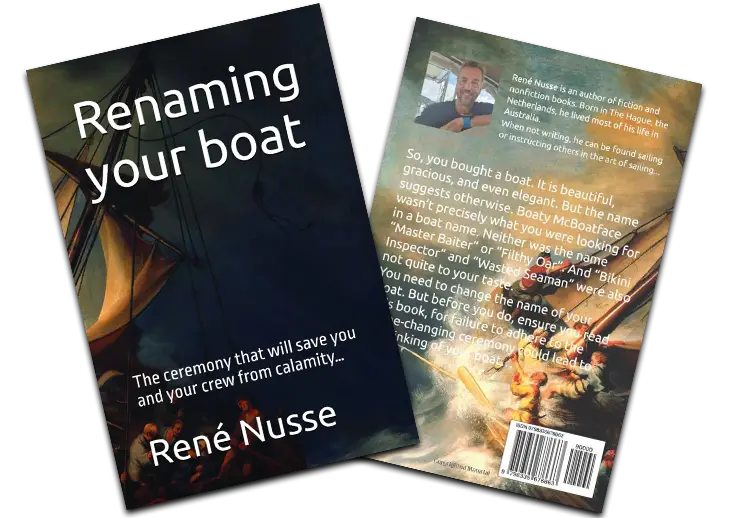How to Cope with Rudder Loss on a Sailboat
Losing a rudder while under sail is a serious and potentially life-threatening situation. The rudder is your primary steering mechanism, and without it, directional control is compromised. However, with calm decision-making, knowledge of emergency steering techniques, and a bit of improvisation, you can regain control and safely reach port.
Understanding the Problem
A rudder can be lost or rendered inoperable for several reasons:
Physical breakage or detachment due to collision with submerged objects
Mechanical failure (e.g., quadrant, tiller, or cable failure)
Structural fatigue or poor maintenance
Impact with heavy debris or marine growth
- Orca attack Read more…
Regardless of the cause, the key is first to confirm the extent of the damage and act accordingly.
Step 1: Stay Calm and Assess
When you lose steering:
Reduce speed by dousing sails or heading into the wind.
Inspect the rudder system: If it’s a mechanical failure (e.g., cable snapped), you may be able to rig a temporary fix.
Check for water ingress: If the rudder post area is compromised, plug it immediately using rags, towels, or wooden bungs to prevent flooding.
Step 2: Establish Emergency Steering
There are several methods to steer a sailboat without a rudder. Each depends on what materials and conditions you’re working with. Note that these methods are not mutually exclusive, so a combination of some or all may be your best solution.
Option A: Emergency tiller
If your rudder is still there but your helm is not responding, then you are likely to solve your problem by deploying your emergency tiller. Rather than using hydraulics and/or cables, it attaches directly to your rudder:
Know where it is located: make sure everyone on board knows where the emergency tiller is located. This should be part of your crew safety brief…
- Know how to deploy your emergency tiller: there is often a stainless steel round cover similar to your diesel and water intakes. Open it, and your tiller should slide down until it locks in.

Option B: Steer with the Sails
Balancing your sail plan can help you maintain directional control:
To head up (into the wind): Reduce the mainsail and keep more of the headsail area.
To bear away (downwind): Increase the mainsail and reduce the headsail.
To maintain a course: Experiment with reefing, shifting weight, and sail trim until balance is achieved.
This method is imprecise but may be sufficient for short distances or safer conditions where you may anchor or heave to.
Option C: Use a Drogue
A drogue deployed off the stern or quarter can act as a makeshift rudder:
Attach it with a bridle to both aft cleats of the boat.
Steer by adjusting bridle length: Shorten one bridle on one side to pull the drogue toward that side, turning the boat away from it.
Tip: You can create a drogue from a bucket, sail bag, or even warps (long lines with knots or weights).

Option D: Construct a Jury Rudder
A jury rudder is a makeshift rudder built from available materials:
Materials:
Spinnaker pole or boom (as a shaft)
Floorboards, hatch covers, or plywood (as a blade)
Line or strapping to lash components
Strong fittings or blocks for control lines
- That table top you just revarnished with 12 layers of Sikkens just last week…
Steps:
Construct the rudder blade: Lash flat surfaces to a pole in a cross shape.
Mount to transom: Secure it over the stern using rope or emergency brackets.
Add control lines: Run lines from each side of the rudder to cleats or winches to steer.
While less efficient than a real rudder, a jury rig can provide enough control to sail to safety.
Step 3: Navigation and Communication
Evaluate Your Route
Avoid strong currents, shipping lanes, or narrow passages.
Favour broad reaches or downwind courses for better sail steering. Read more about points of sail.
Reassess regularly based on the effectiveness of your improvised steering.
Call for Assistance
Use VHF (Channel 16), EPIRB, or satellite communication to alert authorities or nearby vessels. Read more about radio calls.
Share your position, condition, and intentions.
If near shore, contact the Coast Guard or Volunteer Marine Rescue (VMR) for possible towing assistance.
Step 4: Prepare for Repairs or Rescue
If you’re able to make progress:
Sail to the nearest port or anchorage.
Maintain a watch schedule and ensure everyone understands the emergency setup.
Prepare to anchor or dock under sail—you’ll have limited manoeuvrability.
If you’re unable to maintain control:
Conserve battery power, food, and water.
Make yourself visible with radar reflectors, strobes, and signal flags.
Preventative Measures
To avoid rudder loss emergencies:
Inspect steering systems regularly (cables, tillers, quadrants, rudder stock).
- Know where your emergency tiller is located.
Carry a rudder emergency repair kit (rope, plywood, bolts, sealant).
Practice jury rigging and sail steering techniques.
Include a drogue in your emergency kit.
Conclusion
Rudder failure is daunting, but it doesn’t have to be disastrous. With knowledge of your boat’s behaviour, improvisation skills, and a calm approach, you can steer your sailboat safely even without its rudder. Preparation and practice are key, so make these drills part of your seamanship routine. Ultimately, it is all about good seamanship…
If you have any comments, additions or corrections, please feel free to leave a comment below. I will try to respond to your comments promptly, if possible.
Author
-

Rene is a keelboat instructor and sailing coach in the Mandurah area WA. He is also the author of several books about sailing including "The Book of Maritime Idioms" and "Renaming your boat".
View all posts


